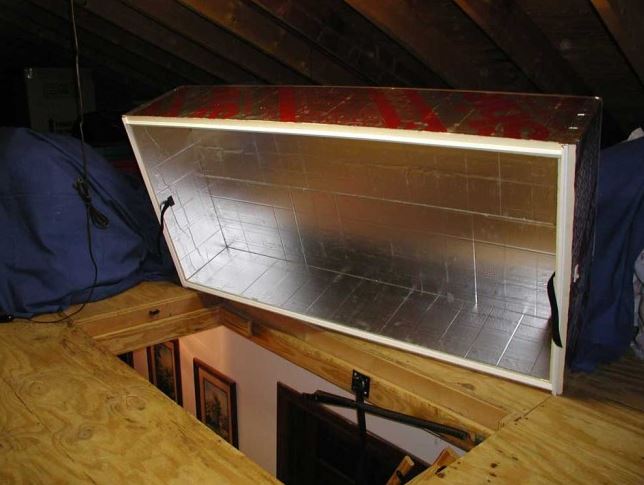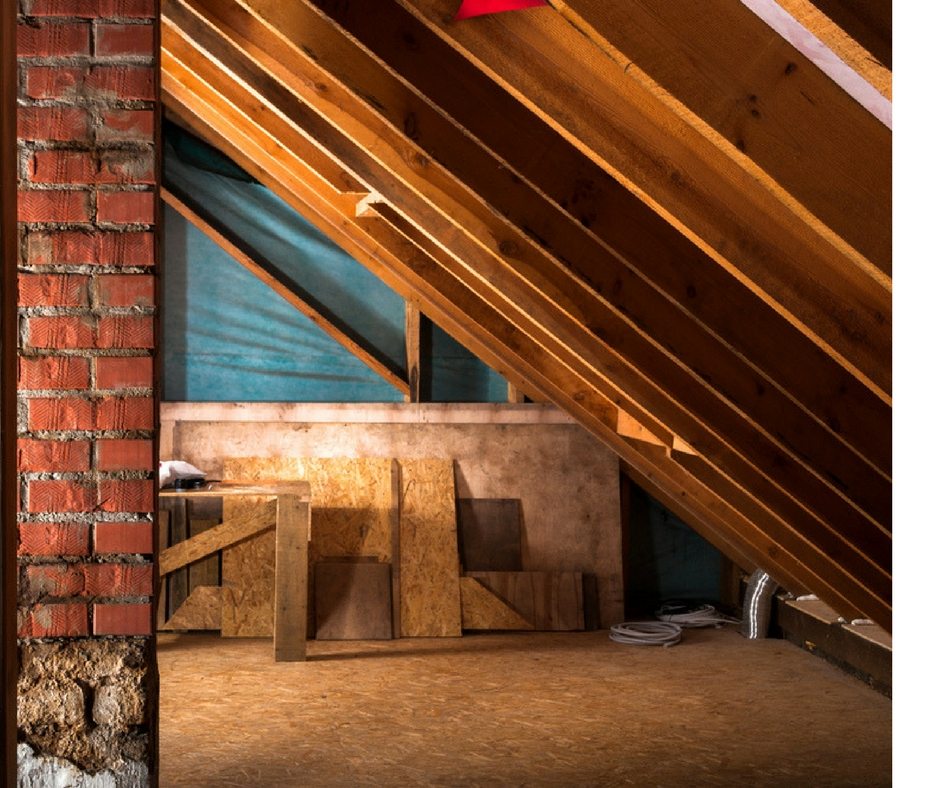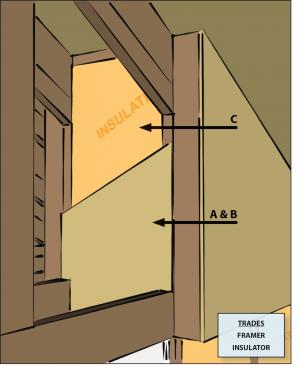Always use unfaced batts both when laying product for the first time and to prevent moisture from becoming trapped between new and old layers of insulation.
Installing attic insulation in dormer walls faced or unfaced.
Any existing batt or roll insulation in the attic should have the facing against the attic drywall floor or no facing at all.
Avoid covering an old layer of faced.
If you do use faced insulation you must take extra precautions to avoid having a fire.
Remember to set the paper faced insulation upwards.
This is the reason you need not add a vapor barrier when you are using paper faced insulation.
You should only use faced insulation as the first layer of insulation.
Run the unfaced strips perpendicular to the joists and butt each strip tightly together to form an airtight blanket of insulation.
Set a t square or metal straightedge over the insulation and press it down firmly.
The kraft paper itself is highly flammable.
The basic installation steps are the same for walls ceilings floors and roofs in wood frame houses.
You can buy them unfaced or simply remove the paper or foil backing.
Installing insulation has almost the same steps for all.
You can use either faced or unfaced batting for this installation.
Place the insulation with the facing side down on a piece of scrap plywood.
Insulating between rafters install batting between the roof rafters for finished attic spaces.
Unfaced insulation can greatly reduce the risk of mold mildew or moisture damage in your house.
The unfaced insulation can be secured to the framing with staples.
Measure the roll or batt of insulation to the area that you are going to install it in.
You may be required to cover the kraft paper with other materials depending on your local codes.
If the attic doesn t have any existing insulation use faced insulation with the paper facing toward the heated living space.
If there is already insulation between the joists increase the r value by installing unfaced roll insulation right on top.
One method is to fill the gaps between the studs with faced batts and then wrap the entire passage with unfaced insulation.
For example if you plan on using your garage for your welding projects you run the risk of having a welding fire.
After securing the insulation wrap the entire passage with house wrap and seal the seams with house wrap tape.
Place a new layer of unfaced batts perpendicular to the old layer to cover any gaps in the lower layer.
To make things safe cover your unfaced insulation with drywall to prevent the risk of a fire.
When using insulation that has.
Batt or rolled insulation or blown loose fill insulation fiberglass or cellulose can be installed on top of old insulation.
Cut the insulation roll or batt to fit the length of the framing cavity if necessary.
When adding more insulation to an attic that already has insulation use unfaced insulation.
Insulation should be rolled out perpendicular to the joists and unfaced rolls should be used.


























